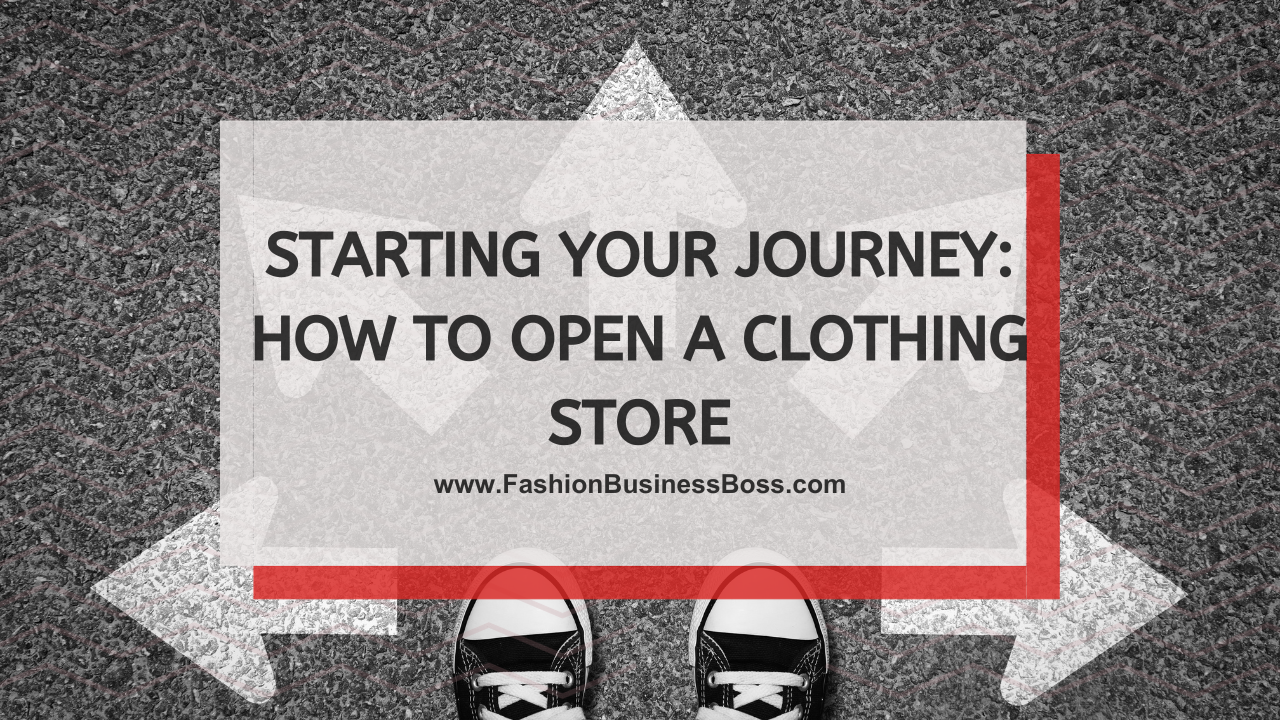Opening a clothing store is a thrilling venture that allows you to combine your passion for fashion with entrepreneurial spirit. Whether you’re looking to create a boutique for high-end couture or a cozy neighborhood shop, let’s embark on opening a clothes store.
To open a clothing store, start with thorough market research, choose a prime location, and create a compelling business plan. Focus on unique merchandise and excellent customer service for lasting improvement.
In this article, let’s see the step-by-step guide on this exciting journey to retail .
Market Research and Planning

Identify Your Niche: Determine your target audience, the type of clothing you’ll offer, and your unique selling points.
Location, Location, Location: Choose the perfect location for your store. Consider foot traffic, nearby competitors, and the overall vibe of the neighborhood.
Business Plan: Develop a comprehensive business plan that outlines your budget, expenses, and revenue projections.
Read more about: Starting Your Journey: How to Open a Clothing Store
Legal Requirements and Business Setup
Legal Structure: Decide on your business structure (e.g., sole proprietorship, LLC) and register your business with the appropriate authorities.
Permits and Licenses: Obtain the necessary permits and licenses to operate a retail store in your area.
Store Design and Layout
Interior Design: Create an inviting atmosphere by choosing the right color scheme, lighting, and decor.
Store Layout: Plan an efficient layout that maximizes space and makes it easy for customers to browse.
Merchandise Selection and Sourcing
Vendor Relationships: Establish relationships with reliable clothing wholesalers and suppliers.
Inventory Management: Implement an inventory management system to track stock levels and reorder when necessary.
Marketing and Promotion
Branding: Create a strong brand identity, including a compelling logo and tagline.
Online Presence: Develop a website and engage in social media marketing to reach a broader audience.
Grand Opening and Customer Service

Grand Opening: Plan a memorable grand opening event to attract customers and generate buzz.
Customer Service: Train your staff to provide exceptional customer service, fostering loyalty.
Ongoing Operations and Growth
Financial Management: Keep a close eye on your finances and adjust your strategies as needed.
Adapt and Expand: Be ready to adapt to changing fashion trends and consider expanding your product offerings.
Read more about: Starting Your Fashion Empire: What It Costs
Conclusion
You now possess the knowledge to embark on your journey of opening a clothing store. Remember that every step in this process should reflect your unique vision and style. With dedication, creativity, and a dash of passion, you’re well on your way to becoming a fashion entrepreneur extraordinaire.
With unwavering dedication, boundless creativity, and a generous sprinkle of passion, you’re not just on the path to becoming a fashion entrepreneur; you’re well on your way to becoming a fashion entrepreneur extraordinaire.
Frequently Asked Questions

Q: How is the ideal location for a clothing store chosen?
A: Factors such as foot traffic, proximity to competitors, and demographics of the area are considered.
Q: What legal requirements are necessary to open a clothing store?
A: Registration of the business, obtaining permits and licenses, and compliance with local zoning regulations are typically required.
Q: How can a strong online presence for a clothing store be established?
A: Developing a user-friendly website, leveraging social media platforms, and engaging in digital marketing are common strategies.
To learn more about starting your own clothing business, check out my startup documents here.
Please note that the contents of this blog are for informational and entertainment purposes only and should not be construed as legal advice. Any action taken based on the information provided in this blog is solely at your own risk. Additionally, all images used in this blog are generated under the CC0 license of Creative Commons, which means they are free to use for any purpose without attribution.

Meet Shawn Chun: Entrepreneur and Fashion Business Fan.
I’m a happy individual who happens to be an entrepreneur. I have owned several types of businesses in my life from a coffee shop to an import and export business to an online review business plus a few more and now I create online resources for those interested in starting new ventures. It’s demanding work but I love it. I do it for those passionate about their business and their goals. That’s why when I meet a designer or boutique owner at a craft fair, farmers market, retail location or anywhere else I see myself. I know how hard the struggle is to retain clients, find good employees and keep the business growing all while trying to stay competitive.
That’s why I created Fashion Business Boss: I want to help fashion business owners like you build a thriving business that brings you endless joy and supports your ideal lifestyle.

